I have researched and analyzed the question of whether or not acetone kills germs. Acetone is a colorless, flammable liquid with a distinctive odor. It is commonly used as a solvent, particularly for nail polish and paint. Acetone is also found in some cleaning products, and it is used in the production of plastics, fibers, and drugs.
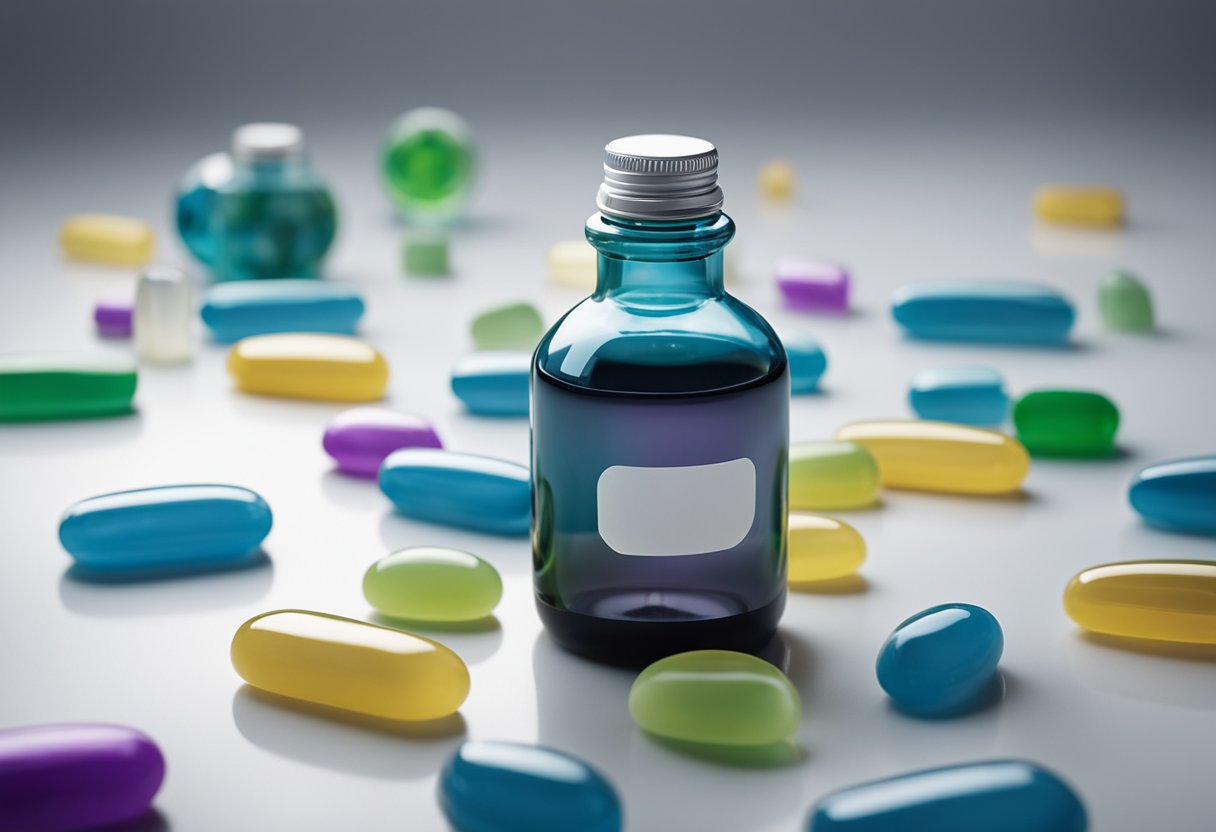
Acetone is a potent solvent that can dissolve many substances, including oils, fats, and waxes. However, it is not an effective disinfectant. While acetone can kill some germs, it is not as effective as other disinfectants because it evaporates quickly, which limits its contact time with bacteria and viruses. According to a study published in the journal Annals of Ophthalmology, when used in a concentrated form, acetone can sanitize surfaces. However, this study did not test acetone against specific strains of bacteria or viruses, and it is unclear how effective it would be against COVID-19 or other pathogens.
Key Takeaways
- Acetone is not an effective disinfectant because it evaporates quickly and has limited contact time with bacteria and viruses.
- While acetone can kill some germs, it is not as effective as other disinfectants.
- Concentrated acetone can sanitize surfaces, but its effectiveness against specific strains of bacteria or viruses is unclear.
Understanding Acetone
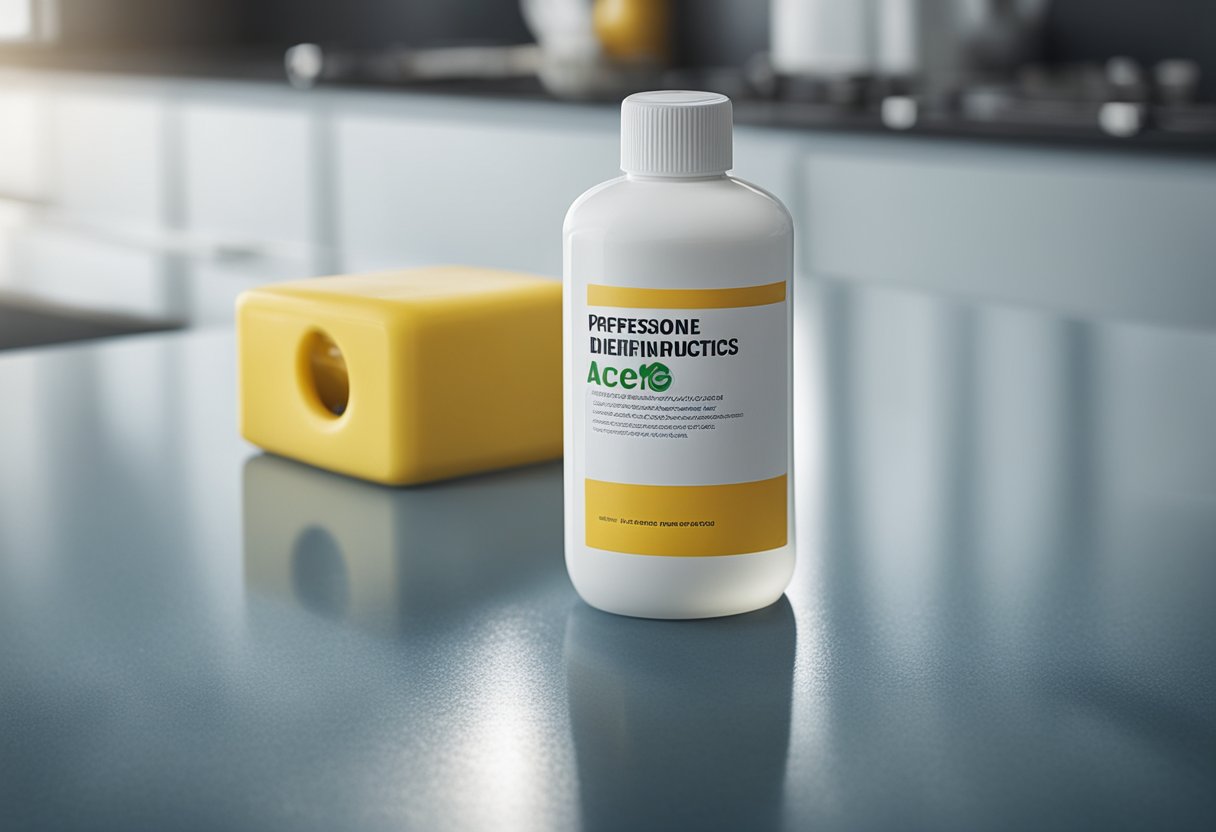
As someone who has worked with acetone before, I can confidently say that it is a versatile and colorless liquid that has many uses. Acetone is also known as propanone or dimethyl ketone, and its chemical formula is C3H6O. It is a beta-ketopropane and is often used as a solvent in many industries, including the pharmaceutical, cosmetic, and chemical industries.
One of the most notable properties of acetone is that it evaporates quickly, making it a popular solvent for cleaning surfaces and removing various substances. Its vapor is also highly flammable, so it is important to use acetone in a well-ventilated area and away from any open flames.
Acetone is also known for its ability to dissolve other substances, including plastics, paints, and coatings. This property makes it a useful ingredient in many products, such as nail polish remover and paint thinner.
Despite its many uses, it is important to handle acetone with care, as it can be harmful if ingested or inhaled in large quantities. It is also important to note that while acetone can dissolve some substances, it is not effective in killing all types of germs.
According to an article on paintsgeek.com, acetone can kill some germs, but it is not as effective as other disinfectants like isopropyl alcohol. It is also important to note that acetone should not be used as a disinfectant on skin or other living tissues.
In summary, acetone is a colorless liquid that is highly versatile and has many uses in various industries. While it can dissolve some substances and kill some germs, it is important to handle it with care and use it appropriately.
Acetone and Germs
As a solvent, Acetone is commonly used in many industries, such as nail salons, printing, and cleaning. Due to its strong ability to break down coatings, people often wonder if it can kill germs.
Studies have shown that Acetone can kill germs on non-living surfaces. According to the Centers for Disease Control and Prevention (CDC), Acetone is a disinfectant that can be used to kill microorganisms such as bacteria and viruses. However, it is important to note that Acetone is not effective against all types of germs.
In particular, Acetone is not effective against bacterial endospores, which are tough, protective structures that some bacteria can form to survive harsh conditions. Additionally, Acetone may not be effective against some viruses, such as the echovirus, which is a type of enterovirus that can cause respiratory and gastrointestinal infections.
It is also important to note that Acetone is not a substitute for proper cleaning and sanitizing practices. While Acetone can help disinfect surfaces, it is not a replacement for soap and water or other disinfectants.
During the COVID-19 pandemic, many people have been using Acetone as a disinfectant due to its availability and affordability. However, it is important to follow proper disinfecting protocols and use Acetone in a well-ventilated area to avoid inhaling harmful fumes.
In conclusion, while Acetone can be effective at killing certain types of germs, it is not a cure-all for disinfecting surfaces. It is important to follow proper cleaning and sanitizing protocols, use Acetone in a well-ventilated area, and understand the limitations of this chemical as a disinfectant.
Acetone in Everyday Products
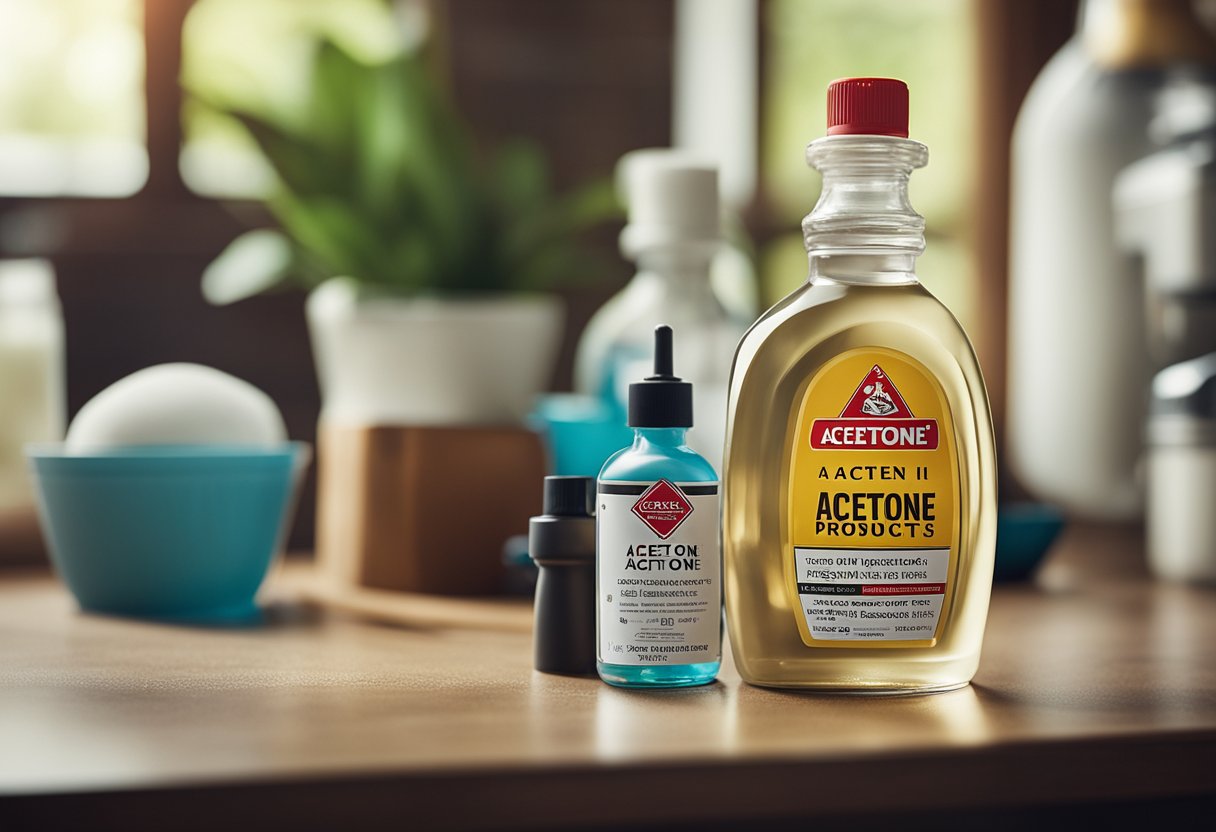
Acetone is a common ingredient in many everyday products, including nail polish, nail polish remover, and paint. It is also used in the production of plastic and other synthetic materials. Acetone is a strong solvent and can dissolve many types of materials, including plastics and synthetic fibers.
Nail polish is one of the most common products that contains acetone. It is used to help the polish dry more quickly and to give it a smooth, even finish. Nail polish remover also contains acetone, which is used to dissolve the polish and make it easier to remove from the nail.
Acetone is also used in the production of paint. It is used as a solvent to help dissolve the paint and make it easier to apply. It is also used to clean up paint brushes and other tools that have been used to apply paint.
In addition to its use in nail polish and paint, acetone is also used in the production of plastic. It is used to help dissolve the plastic and make it easier to mold into the desired shape. Acetone is also used to clean and remove excess plastic from molds and other tools used in the production process.
Acetone is also used in the automotive industry. It is used to clean and remove grease, oil, and other contaminants from car parts. It is also used to clean and remove excess paint from cars that have been painted.
Overall, acetone is a versatile and useful chemical that is found in many everyday products. Its strong solvent properties make it an effective cleaner and remover, but it is important to use it safely and responsibly to avoid any potential health risks.
Health Impacts of Acetone
As a common household solvent, acetone is generally considered safe when used as directed. However, exposure to high levels of acetone can cause a range of health effects, particularly when it is inhaled or ingested.
Inhalation of acetone can cause irritation to the eyes, nose, and throat, as well as headaches, dizziness, and confusion. High levels of exposure can lead to unconsciousness and even coma. Acetone can also cause damage to the nervous system, liver, and kidneys, particularly with chronic exposure.
Ingestion of acetone can cause nausea, vomiting, and abdominal pain. Acute exposure to high levels of acetone can lead to unconsciousness and even death. Chronic exposure to acetone can cause damage to the liver and kidneys.
Skin contact with acetone can cause irritation, redness, and dryness. Prolonged or repeated exposure can lead to dermatitis, a condition characterized by inflammation of the skin.
Overall, while acetone is generally considered safe when used as directed, exposure to high levels of acetone can cause a range of health effects. It is important to use acetone in a well-ventilated area and to avoid prolonged or repeated exposure. If you experience any symptoms of acetone exposure, such as irritation or confusion, seek medical attention immediately.
Safety Measures and Precautions
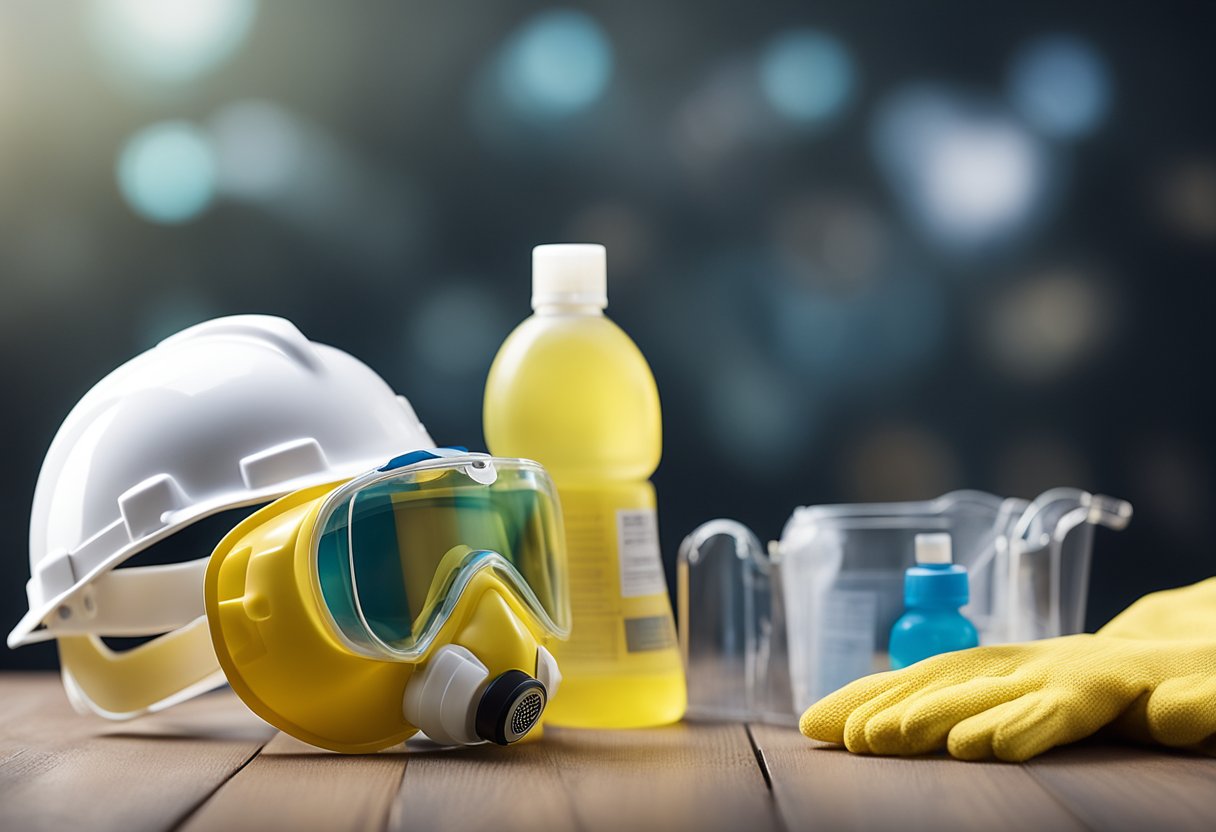
When using acetone as a germicide, it is important to take safety measures and precautions to avoid any harm to oneself or others. As acetone is a highly flammable and volatile liquid, it is important to handle it with care.
Firstly, it is recommended to wear gloves and protective equipment when handling acetone. This is to prevent any skin contact with the liquid, which can cause irritation or even chemical burns. It is also important to avoid inhaling acetone vapors, which can cause dizziness, headaches, and nausea.
Secondly, proper hand-washing is necessary after handling acetone. This is to remove any residue or traces of acetone on the skin, which can cause irritation or dryness. It is recommended to use soap and warm water to thoroughly wash the hands.
Lastly, it is important to store acetone in a cool, dry, and well-ventilated area. This is to prevent any accidental spills or fires, as acetone is highly flammable and can ignite easily. It is also important to keep acetone away from any sources of heat or ignition, such as open flames or electrical appliances.
By following these safety measures and precautions, one can safely use acetone as a germicide without any harm to oneself or others.
Acetone and the Environment
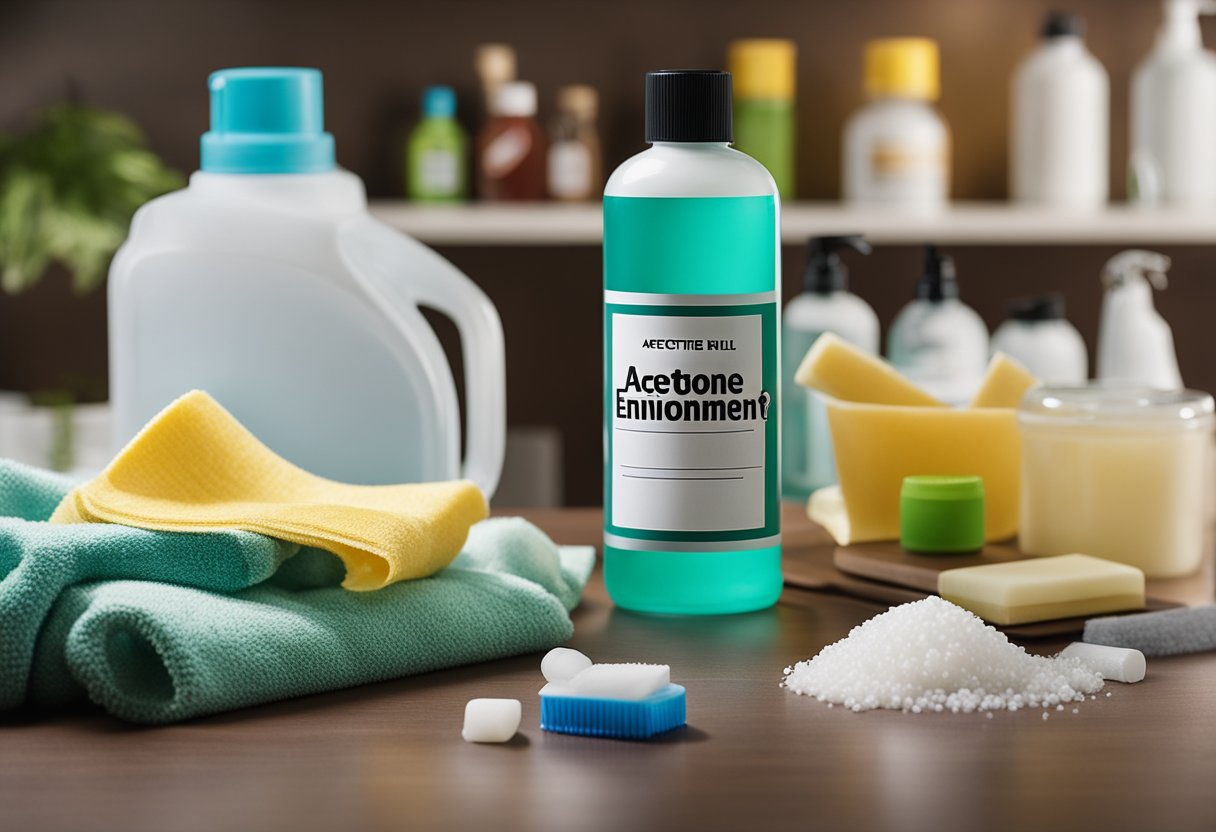
As a man-made chemical, acetone can be found naturally in the environment, including in trees, plants, and volcanic gases. It is also present in small amounts in the human body. However, exposure to acetone can irritate the eyes, nose, throat, and skin, and high levels of exposure can cause headaches, dizziness, confusion, and unconsciousness.
Acetone evaporates easily in air and is flammable, which means it can contribute to air pollution and pose a fire hazard. The Environmental Protection Agency (EPA) has set a limit of 500 parts per million (ppm) for acetone in indoor air, and 200 ppm for outdoor air.
When acetone is released into water, it can dissolve and spread quickly. However, it is not considered a major water pollutant because it is not persistent and breaks down quickly in the environment. The EPA has set a limit of 0.5 parts per million (ppm) for acetone in drinking water.
Acetone can also be deposited on soil and plants through rain and snow. However, it does not accumulate in soil or plants and is not considered a major soil or plant pollutant. In fact, some plants, such as the eucalyptus tree, naturally emit acetone as a defense mechanism against herbivores.
Overall, while acetone can have negative effects on the environment and human health at high levels of exposure, it is not considered a major environmental pollutant. However, it is important to handle and dispose of acetone properly to minimize its impact on the environment.
Regulations and Recommendations
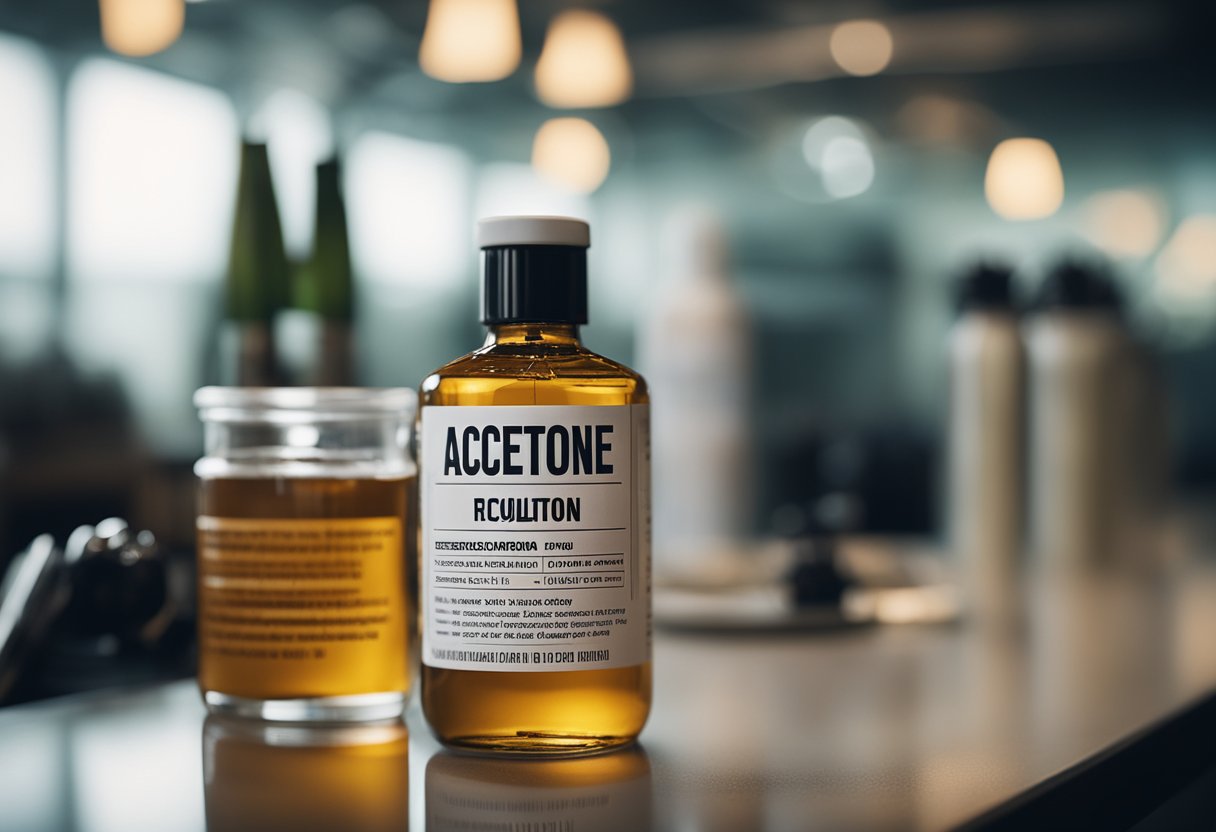
As a chemical, acetone is regulated by various organizations, including the Occupational Safety and Health Administration (OSHA), the Food and Drug Administration (FDA), and the Environmental Protection Agency (EPA).
According to OSHA, acetone is classified as a hazardous substance and should be handled with care. Workers who use acetone should be provided with proper personal protective equipment, such as gloves and goggles, and should be trained on how to use acetone safely.
While acetone is not typically used as a disinfectant in hospitals or healthcare settings, it is sometimes used in industrial settings for cleaning and degreasing. However, it is important to note that the EPA does not consider acetone to be a disinfectant.
The FDA has not cleared any liquid chemical sterilant or high-level disinfectant with acetone as the main active ingredient. However, acetone is known to have some antimicrobial properties and has been shown to be effective against certain types of bacteria and fungi.
Overall, while acetone may have some germ-killing properties, it is important to use it safely and appropriately, and to rely on other disinfectants that are approved by regulatory agencies for use in healthcare and other settings where disinfection is critical.
Alternatives to Acetone for Disinfection

While acetone is a commonly used disinfectant, there are several alternatives available that can be just as effective in killing germs. Here are some of the most commonly used alternatives to acetone:
Alcohol
Alcohol is a popular alternative to acetone for disinfection purposes. It is available in two forms, ethyl alcohol, and isopropyl alcohol. Ethyl alcohol is commonly used in hand sanitizers, while isopropyl alcohol is used to disinfect surfaces. Both forms of alcohol have good germicidal properties and can kill a wide range of microorganisms. However, it is important to note that alcohol is not effective against bacterial spores.
Bleach
Bleach is another popular disinfectant that is effective against a wide range of microorganisms, including bacteria, viruses, and fungi. It contains sodium hypochlorite, which is a powerful disinfectant. Bleach is commonly used to disinfect surfaces, equipment, and instruments in healthcare settings. However, it is important to use bleach in the correct concentration and for the recommended contact time to ensure effective disinfection.
Hydrogen Peroxide
Hydrogen peroxide is a strong oxidizing agent that is commonly used as a disinfectant. It is effective against a wide range of microorganisms, including bacteria, viruses, and fungi. Hydrogen peroxide is commonly used to disinfect surfaces, equipment, and instruments in healthcare settings. It is also used as a bleaching agent in some industries. However, it is important to use hydrogen peroxide in the correct concentration and for the recommended contact time to ensure effective disinfection.
Sodium Hypochlorite
Sodium hypochlorite is a powerful disinfectant that is commonly used in healthcare settings. It is effective against a wide range of microorganisms, including bacteria, viruses, and fungi. Sodium hypochlorite is commonly used to disinfect surfaces, equipment, and instruments. However, it is important to use sodium hypochlorite in the correct concentration and for the recommended contact time to ensure effective disinfection.
In conclusion, while acetone is a commonly used disinfectant, there are several alternatives available that can be just as effective in killing germs. It is important to choose the right disinfectant for the job and use it in the correct concentration and for the recommended contact time to ensure effective disinfection.
Frequently Asked Questions
What are the uses of acetone in cleaning?
Acetone is a versatile solvent that is commonly used in cleaning applications. It is effective in removing grease, oil, and other types of contaminants from metal surfaces. Acetone is also used in the production of many cleaning products, including degreasers, paint removers, and nail polish removers.
How is acetone used for nail care?
Acetone is commonly used in nail salons as a nail polish remover. It is effective in removing even the toughest nail polish, including glitter and gel polish. However, it is important to note that acetone can be harsh on the nails and cuticles, and frequent use can cause dryness and damage.
What are the benefits of using acetone for cleaning metal?
Acetone is a powerful solvent that is effective in removing stubborn stains and contaminants from metal surfaces. It is also fast-drying and leaves no residue, making it an ideal choice for cleaning metal parts and surfaces in industrial settings.
How is acetone used in chemistry?
Acetone is a common solvent in chemistry labs due to its ability to dissolve a wide range of organic compounds. It is often used as a cleaning agent for laboratory equipment and as a solvent for chemical reactions.
Can nail polish remover be used as a sanitizer?
Nail polish remover should not be used as a sanitizer. While acetone is effective in killing certain types of bacteria and viruses, it is not a substitute for hand sanitizer. Hand sanitizers contain a higher percentage of alcohol and other active ingredients that are specifically designed to kill germs.
Does acetone have antiseptic properties?
Acetone is not an antiseptic and should not be used to disinfect wounds or other areas of the skin. In fact, it can be irritating to the skin and may cause dryness and cracking. If you need to disinfect a wound or other area of the skin, it is best to use an antiseptic solution or consult a healthcare professional.

Hi, I’m Sal Muller of Tooltrip.com. My DIY experience led me to understand essential power tools for home projects. Tooltrip.com guides enthusiasts and professionals in choosing right tools for any job. I provide concise top tool reviews for easier, efficient DIY.

